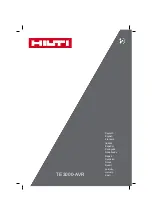
User Connections
30
Local Voltage Sensing
Your power supply was shipped set up for local sensing. This means that the unit will sense and regulate its output at the
output terminals, not at the load. Since local sensing does not compensate for voltage drops across screw terminals, bus
bars, or load leads, local sensing should only be used in applications that require low output current or where load regulation
is not critical.
Local sensing is obtained by connecting the
+LS
sense terminal to the +S analog connector pin and the pin and the
–LS
sense terminal to the –S analog connector pin. The power supply is shipped with these connections made.
Note
If the sense terminals are left unconnected, the voltage at the bus bars will increase approximately 3 to 5% over the
programmed value. Since it is measured at the sense terminals, the voltage readback will not reflect this increase.
Remote Voltage Sensing
The dashed lines in the wiring diagrams illustrate remote voltage sensing. The remote sense terminals of the power supply
are connected directly to the load rather than to the output terminals. This allows the unit to automatically compensate for
the voltage drop in the load leads as well as to accurately read back the voltage directly across the load.
Setting Up Remote Sense Operation
Remote sensing is obtained by removing the jumpers connecting the
+LS
sense terminal to the +S analog connector pin and
the
–LS
sense terminal to the –S analog connector pin. The power supply is shipped with these jumpers connected.
Connecting the Sense Leads
You must connect the positive side of the load to the +S analog connector pin and the negative side of the load to the –S
analog connector pin (see Figure 4-1). Connect the sense leads carefully so that they do not become open-circuited. If sense
leads are left open during operation, the unit will regulate at the output terminals instead of at the load. Remember to bundle
or tie wrap the load leads to minimize inductance and reduce noise pickup.
CV Regulation
The voltage load regulation specification in Table A-1 applies at the output terminals of the power supply. When remote
sensing, this specification must be compensated. Add an increment to the voltage load regulation specification as specified
by “
mV” in the equation given under
Load regulation
in Table A-2.
Output Rating
The rated output voltage and current specification in Table A-1 applies at the output terminals of the power supply. With
remote sensing, any voltage dropped in the load leads causes the unit to increase the voltage at the output terminals so it can
maintain the proper voltage at the load. When you attempt to operate at the full-rated output at the load, this forces the
voltage at the output terminals to exceed the unit's rated output. This will not damage the unit, but may trip the OVP
(overvoltage protection) circuit, which senses the voltage at the output bus bars. When operated beyond its rated output, the
unit's performance specifications are not guaranteed, although typical performance may be good. If the excessive demand on
the unit forces it to lose regulation, the
Unr
annunciator will indicate that the output is unregulated.
Output Noise
Any noise picked up on the sense leads also appears at the output of the power supply and may adversely affect the load
voltage regulation. Be sure to twist the sense leads to minimize external noise pickup and route them parallel and close to
the load leads. In noisy environments, it may be necessary to shield the sense leads. Ground the shield only at the power
supply.
Do not use the shield as one of the sense conductors.
Summary of Contents for E4356A
Page 1: ...Operating and Programming Guide Keysight Model E4356A Telecommunications DC Power Supply ...
Page 2: ......
Page 6: ...5 Declaration Page ...
Page 13: ......
Page 109: ......
Page 113: ......
Page 119: ......
















































